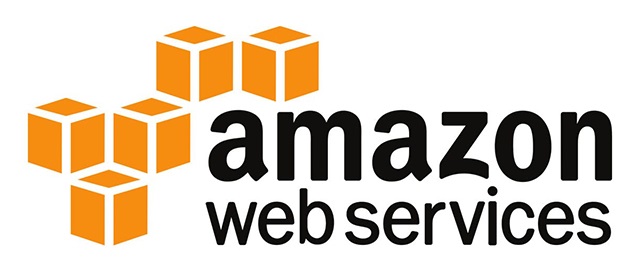What Child Support Can Pay for, and What It Doesn't Cover
Most state courts decide child support figures based on a combination of factors and formulaic calculations that take into account both parents' incomes and the needs of the children involved. The goal of the courts is usually to ensure that children's basic needs are being met and that both parents are contributing in an appropriate way to the monetary obligation involved with raising children.
When negotiating your child support agreement, it is helpful to understand exactly what child support is and what the legal expectations and limitations are regarding it. Before you start working through our child support tools on it’s over easy, check out the information below.
Child Support Is Meant to Support the Children
The goal of child support, no matter who pays or how much, is to provide for your children. Regardless of how your marriage ends, the courts and state laws impose upon you a legal obligation to provide monetarily for your kids.
That is true regardless of visitation and custody status; sometimes, individuals going through a divorce forget that support, custody and visitation are all separate matters in the eyes of the law. Just because the kids aren't with you as much doesn't mean you don't have to pay to support them, though you might work on a deal through your divorce that takes into account special considerations regarding which parent covers what expenses.
This is especially important to consider if you have children who have special educational needs or mobility needs which may require them to spend more time in one parent’s household over another’s.
The law does assume child support will help pay for specific necessities for children. Some things that child support is meant to help cover are listed below, though state laws differ slightly, and one of the benefits of an uncontested divorce that you manage yourselves is that both parents can make and agree to their own decisions about how support is used — as long as children are well-cared for and have their basic needs met.
- Food. Child support can be used to fund grocery purchases or eating out on occasion.
- Clothing. Support money can be used to buy clothing and shoes for children, but not apparel for the spouse receiving the child support payment.
- Shelter. Child support can be used to pay bills associated with shelter, including rent or utility costs, even though the other spouse also likely lives in that location with the children.
- Medical care. Support can be used to pay for premiums for health insurance as well as expenses that aren't covered by insurance, such as copays, deductibles, uncovered treatments, equipment and medicine.
If your child has special health care needs or specific mobility needs, then it is a good idea to consider those when you are negotiating child support. Some couples also agree that one of them will carry health insurance on the children as a form of support, though this is not always in keeping with court calculations. - Education. Child support is also used to cover fees, the cost of supplies and tuition associated with schooling for kids. Some things that can be purchased with support funds include textbooks, school lunches, uniforms and supplies. Children with special education needs may benefit from home schooling and other progressive educational modalities which would fall under this category. In some cases, you might agree that support can be used to fund college tuition or other expenses.
- Child Care. While it might seem like child care is for the benefit of the other spouse, it is actually necessary to keep children safe and healthy as mom or dad works. Child support can, within reason, be used to help cover costs associated with day care, preschool, babysitters or nannies.
- Other normal, reasonable expenses. Other things child support can be used to cover include reasonable entertainment and travel costs, extracurricular activities such as sports or summer camp and other items agreed upon in the support order. When including "other" expenses in a child support order, it is sometimes helpful to spell out what the expectations are so that both parents are aware of their obligations and can ensure children are receiving everything they need.
Courts Don't Typically Track Custodial Parent Spending of Support Funds
While the courts assume that the custodial parent or parents use child support funds to provide for the types of things listed above, they don't track parental spending or ask for a report of expenses in most cases. As long as the children are being cared for, the courts assume that the parent is spending the money on them. That means that every dollar you pay to your former spouse is not necessarily earmarked for a specific activity or expense. Typically, that money goes into the other parent's operating budget, and then they spend money out of that budget for their children.
Child Support Doesn't "Pay" the Other Parent
In some cases, people paying child support can sometimes feel like they are funding the other parent's lifestyle. If your children are being provided for, then this is very unlikely. In most cases, you aren't typically required to fund all of your children's needs, which means that the other parent is relying on the funds for part of those needs and is providing the other part of the financial support themselves.
If you believe, however, that the other parent is not using the funds to support your children — a belief you arrived at because you don't see evidence that your children are being appropriately provided for with regard to food, shelter, clothing or medical care — you do have legal recourse. You can return to court to fight for custody of your children or take other action, though this is typically outside the purview of amicable legal action you can take through our platform.
Making Child Support Payments Doesn't Guarantee Decision Power
Another important thing to know is that paying child support that covers something such as education or medical expenses doesn't mean you actually have a deciding say in those matters. Remember, support is separate from custody, and your custody agreement is what dictates who can decide certain things. If you want to have input and veto power in decisions such as where and how your child will be schooled, then work with your spouse via it’s over easy’s in-platform messaging and template tools to draft a separate joint custody agreement that you are both happy with. The messaging feature also allows you to keep a record of agreements and decisions that can be downloaded at any time.
Divorce Agreements Can Call for More Than Basic Support
When the courts decide on child support amounts, they use vetted templates and calculation tools that are specific to each state. They might consider how much each parent makes, what types of financial obligations are involved and if there are special educational or mobility needs that need to be considered. Court-ordered child support that comes out of these processes is formulaic, which means it doesn't necessarily capture the personality and needs of your children and family. For example, court-ordered child support doesn't always ensure all extracurricular activities are accounted for, and it won't usually consider something like private sports clubs, birthday party gifts for your children's friends, teen cell phone bills or prom expenses. All of those are very normal, appropriate expenses that could come up during the raising of a child, though.
One of the values in filing for an amicable, online divorce is that you and your spouse have more control over the process. You can use the child support calculators on it's over easy to arrive at a starting point for negotiations, but you can also extend the negotiations to cover all manner of expenses and contingencies.
Flexible, Easy-to-Use Child Support Solutions
Another benefit of the tools at it's over easy is that they are flexible. You can begin working on the process, realize you need time to consider new ideas or come up with data about actual expenses, and step away from everything for a few days or even weeks. Everything is saved for you, so when you return, you can pick up right where you left off. Your spouse can do the same, and you can navigate from your dashboard to review and add information on schedules that work best for you.
We know that child support and custody matters are two sticking points for many parents going through divorce, so we have put extra care into the available tool set, which is designed to support amicable divorce situations. If you find that things get too tense, and a break from the process isn't likely to help, it's over easy also makes it easy for you to reach out to mediators and counselors, and you can even save time and money by exporting everything you've done so far if you decide to seek further assistance from a legal professional.





Comments